The old Land Rover Defender – last sold new (here) back in the 1990s – was a primal SUV; the thing didn’t even have carpet. A hose-it-out-interior. An aluminum body.
An ancient – and underpowered – V8.
But it did have was cachet. There was something special about driving what you saw the TV safari show guys driving.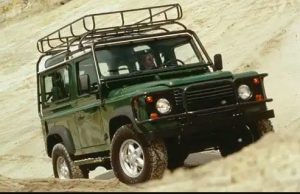
It could go through – and over – practically anything.
There was nothing else like it.
Well, nothing new.
You had to go back to the ‘70s to find a similarly primal 4×4 – something like an old Ford Bronco, International Scout or Jeep CJ.
Which were merely cool.
Now the Defender’s back – this time, with carpet.
The Defender is a legend. The star of safari shows and off-road endurance races. The original came with nothing that wasn’t essential to being unstoppable.
But it came with very little else.
Not even carpet. Or, power.
Its tiny 3.9 liter V8 made less power than the new Defender’s standard four – and less than half as much as the new Defender’s optional V6.
Plus, you get carpet… no extra charge.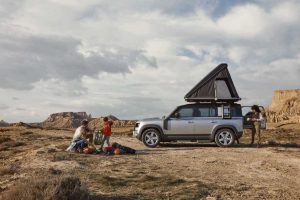
Also your choice of two bodystyles – and lengths. The short wheelbase, two-door Defender 90 and the long-wheelbase, four-door Defender 110.
Both come with full-time four-wheel-drive, a two-speed transfer case and almost nine inches of ground clearance – just like the original. They also come standard with a 10-inch touchscreen, a stereo with AppleCarPlay/Android Auto and carpet.
Very much unlike the original.
Plus something else that’s pretty remarkable these days. A lower price than the original.
Prices start at $49,900 for the base trim 110 – which is $1,785 less (in inflation-adjusted dollars) than Land Rover charged back in 1997 for a Defender without carpet ($32,000).
A top-of-the-line 110X four-door with a six cylnder/hybrid powertrain, panorama sunroof and heaters for the front and rear seats stickers for $80,900.
Prices for the two-door Defender 90 – which will be available this summer – should roughly parallel those of the 110.
What’s New
The Defender returns to the U.S. after an absence of almost 25 years.
What’s Good
Just as capable as the original.
Much more livable than the original.
Costs less than the original.
Less primal than the original.
Turbocharged engine under more pressure than the original.
Just 20.4 inches of legroom in the 110’s optional third row.
Under The Hood
The original Land Rover had the cachet of an aluminum V8 – a rare thing back in the ‘90s. But it was an ancient – and weak – V8.
It was an ancient GM V8, actually.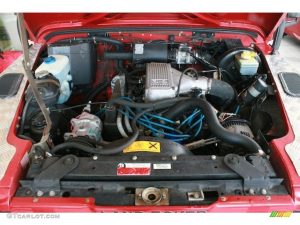
Land Rover bought the rights to the small (3.9 liter) V8 that GM designed back in the early 1960s – and used it in the ‘90s-era Defender. It made all of 182 horsepower – sad for a V8 and desperately inadequate in a 4,000-plus pound 4×4 SUV. The last Defender was slower than a current Prius – and five times as thirsty.
You were lucky if you got 13 MPG – on the highway.
The new Defender comes standard with an engine half the size of the original’s – a 2.0 liter turbo’d four – that makes 296 horsepower. This is more than adequate to move the new Defender, which can get to 60 in 7.7 seconds.
A V8-powered ’97 Defender needed 11.8 seconds – neck and neck with a new Prius.
An optionally available 3.0 six/turbo-hybrid drivetrain ups the underhood ante to 395 horsepower and gets the 5,000-pound Defender to 60 in half the time it took the old Defender – and uses half the fuel.
Both engines are teamed up with eight-speed automatic transmissions and a full-time 4WD system which Land Rover calls all-wheel-drive. Which it technically is, since all four wheels are driven. But it’s confusing – as well as under-selling what Land Rover is offering here.
Historically, AWD meant a light-duty system of the sort one finds in cars – without a two-speed transfer case and Low range gearing. These systems were designed primarily to impart a traction advantage on paved roads.
4WD was meant for that – plus off-roading. The two-speed transfer case and 4WD Low gave the vehicle so equipped the leverage advantage to get through deep mud, unplowed snow and over uneven/rough terrain.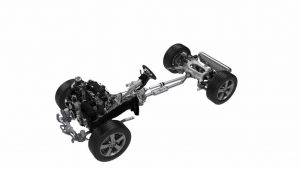
But it wasn’t just that. 4WD systems were generally made of heavy, tough components designed to not break over rough/uneven terrain. the typical AWD system wasn’t designed for that and would probably break if you subjected it to that.
The old Defender had 4WD – and so does the new one. The difference is verbiage. And the way it’s engaged and controlled. In the old Defender, you engaged it – and controlled it. In the new one, the computer handles it.
But the leverage advantage is the same.
On The Road
The old Defender was great for camping and off-roading . . . and terrible everywhere else. It was slow, thirsty, drafty and tipsy. Driving one on road took more skill – and thought – than driving the new one off-road.
If you weren’t careful it was easy to get into trouble. In part because the old Defender barely had power enough to get out of its own way. I remember driving a brand-new one back in ’97, in DC-area traffic. Merging was harrowing; floor the gas and silently pray that one of the cars closing fast in your rearview would sidle over to the left and give you time to build speed.
The V8 screamed but you didn’t move.
The new Defender is no less capable off-road but much more comfortable on road – because it isn’t tipsy, drafty – or wheezy. It corners almost oddly well given it sits so high off the ground. This is the biggest single improvement since the ’90s when it comes to real-deal SUVs.
Twenty-five years ago, serious 4x4s were … primal. You drove them with respect for their on-road limitations. This driving at least 10 MPH below the posted speed limit in the curves and keeping both hands on the wheel at all time – just in case a gust of wind hit you from the side and knocked you into the next lane. Everything you did, you did carefully and gradually – so as not to upset the delicate equilibrium. Only a fool or a maniac drove one faster than 70 – which may be why they did their best to convey the unwisdom of going faster than 70 with abundant wind and tire noise, weird handling feel and a general sense of imminent doom if you didn’t chill out and cut your speed.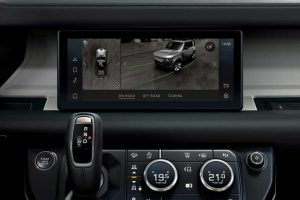
The new Defender is any easy driver. It is also thoughtfully laid out for the driver. The gear selector is mounted up high on a shelf – not on a console below -where you can reach it readily and never have to worry about spilling your coffee all over it. There are rotary knobs adjacent to this for the HVAC (heat and AC) adjustment.
Notice that the steering wheel’s spokes are positioned so you don’t break your thumbs while rock-crawling and column is positioned in such as way as to prevent your knees from interfering with incremental inputs, as when shimmying up a very narrow trail with trees inches away on either side.
The center console has built-in-grab handles for the driver and passenger – with a huge cubby in between for whatever you need to stow but want to be able to get at quickly.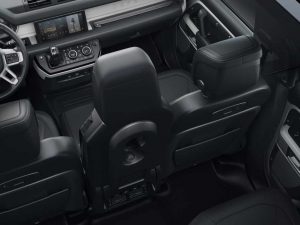
The first row center console can also be configured as a jump seat – for three-across adventuring.
One thing that’s very different – from the original – is the large pinch/swipe touchscreen, which displays approach/departure angles, inclination/declination and even provides remote camera views of wheel angle – also helpful off-road.
One thing that’s identical to the original is that you can see where you’re going – and what’s around you – without relying on a closed-circuit camera system The breadbox dash is low relative to the seats and the windshield is huge – an almost vertical expanse of glass that extends upward so much it almost qualifies as a sunroof. The side glass is equally tall, giving you probably 25 percent more view than in most new cars.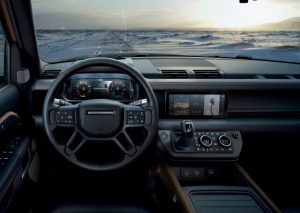
The verticalness continues all the way around to the rear (and side-opening) liftgate, which does not slope or pinch . . . so you can see what’s behind you without a camera.
At The Curb
One of the neat things about the new Defender is the availability of body styles – two door or four-door – as well as seating configurations. The 110 is available with a third row – expanding its seating capacity to seven.
In theory, at least.
Legroom in the Defender 110’s third row is just a bit more than 20 inches – about four inches less than in the backseat of a Camaro. But you can make more room by sliding the second row forward a bit – and even if you don’t, the third row gives people in the second row a place to put their stuff.
The Defender also comes with a full-size spare tire.
Most new vehicles – including many SUVs – come with a mini-spare that’s designed to let you limp to the closest tire store. The Defender’s spare is the same as the other four – so you can keep on going, wherever you were headed.
Land Rover says the Defender’s interior materials are specially made to retain the “new” look longer – and this protective theme carries to the exterior, too. In anticipation of the rigors of off-roading, the Defender’s paint receives a satin protective film designed to keep the shine shining – and rocks from chipping.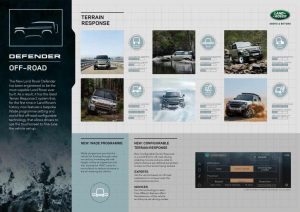
Two-tone paint schemes and matte-finish body cladding can be specified. Four “Packs” are available, too – Explorer, Adventure, Country and Urban. Each configures the Defender accordingly.
Explorer Defenders get a high-mounted air intake – to prevent sucking water into the engine and hydro-locking the engine; roof racks and side-saddle gear containers, mud flaps, modified front skid plates and trim. It’s the one for the Crocodile Dundee in you.
The Adventure Pack gets you a carry-it-with-you pressurized wash system with 6.5 liter reservoir, air compressor, side-saddle accessory storage and a back seat that converts into a backpack.
If you get the Country Pack, you get the portable rinse system, configurable interior loadspace partition and mud flaps.
The Urban gets bright trim, deployable tubular running boards and the option to outfit the Defender with 22 inch wheels – if you gnoe what I’m sayin’.
You can even get a roof-mounted tent – with a ladder to get up there. Why up there? Because lions might be down there.
Good on you, mate!
One thing you can’t get in the new Defender that you could in the old is a diesel engine. Regular readers of EPautos will know why Land Rover won’t be offering a diesel engine in the new Defender.
At least not here.
But, its not a huge loss – in terms of the torque. The modern turbo-charged gas engine produces near-diesel torque (295 ft.-lbs. in this case) and at diesel-like engine speed (just 1,500 RPM)The gas-hybrid V6 produces herculean torque – 406 ft.-lbs. (at 2,000 RPM) and neither need a particulate trap or DEF.
One thing you’ll soon be able to get is a pick-up version of the Defender – something that hasn’t been available ever.
Jeep offers something similar – the Gladiator – but while a Jeep is one Hell of an offroader, it isn’t a Land Rover.
A last word about then vs. now.
The old Defender was primal because it was mostly mechanical. Almost anything that ailed it could be dealt with in the field – literally – using basic hand tools. This was good but also bad because the original was notorious for being in need of frequent fixing.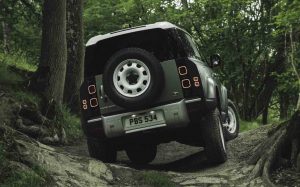
The new Defender is not simple because it is very electronic. Which is bad, because if something ails it, you’ll likely need a dealer.
On the upside, it’s probably less likely to need fixing… because it’s not 1997 anymore.
The Bottom Line
Rock-crawling cachet – with carpet, this time.
. . .
Got a question about cars, Libertarian politics – or anything else? Click on the “ask Eric” link and send ’em in!
If you like what you’ve found here please consider supporting EPautos.
We depend on you to keep the wheels turning!
Our donate button is here.
If you prefer not to use PayPal, our mailing address is:
EPautos
721 Hummingbird Lane SE
Copper Hill, VA 24079
PS: Get an EPautos magnet or sticker or coaster in return for a $20 or more one-time donation or a $10 or more monthly recurring donation. (Please be sure to tell us you want a sticker – and also, provide an address, so we know where to mail the thing!)
My latest eBook is also available for your favorite price – free! Click here. If that fails, email me at EPeters952@yahoo.com and I will send you a copy directly!


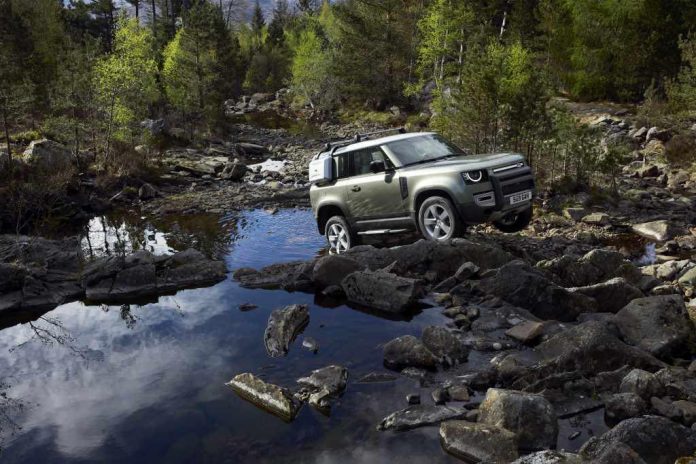



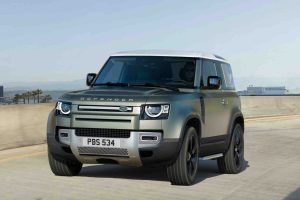
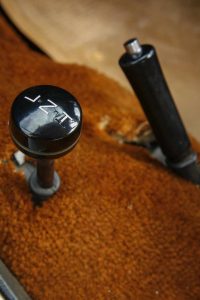







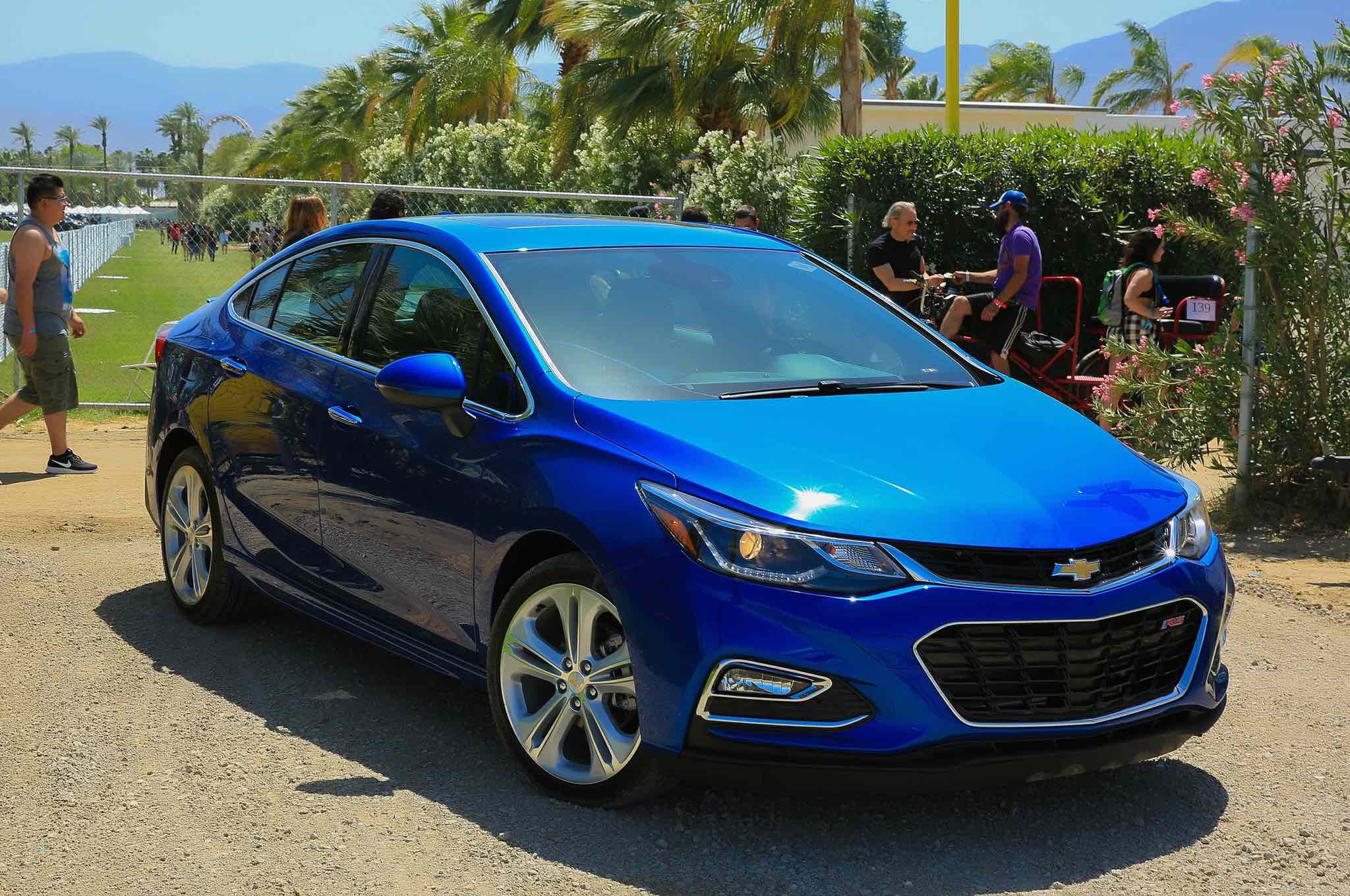
Soon to be on craigslist for $1500 due to very poor build quality and reliability and a blown engine .
There are a couple vehicles that cause me to covet. Land rover is one of them.
There’s a dude in my neighborhood that has a nearly perfect series 1. Looks like he’s ready to hit the Serengeti. Nothing other than badass.
The other?
70s Land Cruisers. dude down the street from me had a 1976 Land Cruiser in Blue and White. Bought it new, only used it for camping. I’m in Texas, so – no rust. Kept in the garage. Dude’s a hundred years old. I don’t know how many times I’ve said …”If you ever think of selling it….”
I’m in the market for that. Something with internals as understandable as a butter churn.
Gotta love Land Crushers, they’re beastly
Hope he sells it to you now
Eric,
There’s another primal 4×4 you forgot: the old Toyota Land Cruiser of the 1970s. Those things were tough. It sort of reminded me of the old school Land Rovers we’d see on “Wild Kingdom”…
My all time favorite primal 4×4 was the old Ford Bronco from the 1960s, the original that used to take part in the Baja off road races; that was one TOUGH machine! The local Ford Dealer had a pristine one in the showroom, but it wasn’t for sale… 🙁
Hi Mark,
Indeed; a great vehicle! I’ll raise you one, too. Ever drive a UAZ?
At 80k+ it will make a fine upscale urban soccer mom machine to compete with the neighbor’s tricked out Rubicon.
I’ve got a 110 & ’12 LR4 (for towing and the wife). The new Defender seems to be a fine vehicle but it’s NOT a successor to the Defender. It’d been better if Land Rover had called it an LR6 – it has more in common with the LR4 (shape-wise) and Discovery 5 than a Defender. When my LR4 dies, the new Defender may be a viable replacement. The 110 won’t die short of being in a fire, driven off a cliff, or high speed collision – everything is bolt together and meant to be rebuilt/replaced in perpetuity.
At least the new Defender looks different than everything else in their showroom – take a look at the Land Rover home page and you’ll see what I mean.
FYI, Land Rover did make a pickup version of the older Defender, just not for the US market (search for “defender hi-cap”).
The two speed transfer case is very nice, but the lack of diesel not so much. Is the carpet really an upgrade? Sounds less washable to me. I like the idea of being able to just hose it all out. Did they make the infotainment system somewhat water resistant? And I simply don’t buy cars that don’t have a real spare wheel. Good on them for including what no one else will at seemingly any price range these days besides Jeep. Makes my day to hear about this car.
I’m not sure where you were “25 years ago” or what you consider a “serious 4×4” does a full size 4wd pickup count ??? My 1973 K20 was fine on the highway and would take corners on mountain roads faster than many cars, and that was on 7.50-16 bias ply tires and split rims. I had to rescue a LR once out in the bush in Alaska.
The GMT400 “K” pickups of ~25 years ago are arguably much nicer on the highway than the square bodies of 20+ years prior to that.
Carpet is a wonderful addition to a serious 4×4 especially when you get back in with mud to your knees.
When I hear or see the words Land Rover I think of the vehicles from 60 years ago or more. They were so slow and narrow pavement wasn’t an advantage for them. I liked them with air intake and exhaust above roof level and sealed ignitions that would literally drive with the entire vehicle under water.
I guess if you only go back to the 90’s then you wouldn’t mention the Blazer. I owned the last year model Blazer and the driveline was really good while the rest of the vehicle sucked.
But going back to when the Blazer debuted in 69 it was one of the best of all offroad machines and would even run circles, literally, around everything else made back then. I’ve driven everything except a Land Rover since they were left hand drive and weren’t sold in the US.
I recall early in the life of the Blazer C&D took one along with a new Bronco out to do their thing. The Bronco got stuck in beach sand and had to be towed out by the Blazer. It’s that front to rear weight distribution they got right with the Blazer and they’d haul trailers with 50 bales of hay.
Thinking about being in the middle of nowhere, especially on the African continent, I’d shy away from the 90’s and newer Land Rover’s. The old stuff was slow but it was stout. When I consider the new off road machines I can’t help but think of the “Pussy Wagon” in Kill Bill although it’s probably more heavy duty than anything made now. Bluetooth, nannyism on just about every part of vehicles now equals what used to be gear drive transfer cases and HD drivelines and suspension.
And to think we’re 20 years into vehicles that will brick when just about any sensor fails. I hang my head.
I remember when LR had some sort of straight four “tractor engine” in them.
But you didn’t see them at all very often. Mostly it was the original Scouts and Broncos, and Jeeps including the CJ, Wagoneer, and even the original Willys wagons were still around in fair numbers.
And then of course Squarebody Chief Engineer Paul Hitch suggested making a 2-door short Suburban and calling it a Blazer! He thought they might sell a few here and there LOL
Anon, it wasn’t too much of a stretch. You just took a K10 or 20, cut the back of the cab off and stuck on a fiberglass roof on the rest and stuck another seat in the rear. A lot of those came with front and rear locking diff’s and they’d just about climb a tree. In fact, I have seen people pull up to a tree, wrap a winch line around a limb up high and hang them just for the hell of it.
I had a Silverado K20 with carpet that rotted from changing irrigation pipe. I replaced it with the Chevy version of rubber that replaced the carpet. It was more sound deadening and when you got in with mud and snow and ice and water or whatever, the liquid would slide to the doors and you only had to wash it out. I liked it much better than carpet and I intend to use it on my 93 X cab when I rebuild it. Oh, carpet looks nice but so does a rubber mat if you keep it slicked up with one of the many products just for that. In fact, the entire front of my 93, except for the transmission tunnel had heavy truck mud flaps cut to fit the floor. Spill a drink and open the door and let er roll out. Another thing I loved about that pickup as the inside of the door panels and the rear side panels were coating with a thick coating of the stuff like they used in trunks. It was a very quiet pickup. I wish it had a galvanized bed like my K20 Silverado.
I bought a brand new 1973 K20 in 1974. It had the 350 v8 and TH350 and an AM radio and a white top and a spare tire and a step bumper. I think that was the entire list of options. Standard cab and no chrome. Rubber floor mats of course.
Sometime later I went to work for the same Chevy dealer as a shuttle driver, and some customer got a chrome bumper replaced under warranty because of a tiny scratch. The new car boss (who also lived across the street from us) let me pull it out of the scrap bin and take it home one night. So I pulled off the white painted bumper and installed the free chrome bumper. Later I gave the white bumper to somebody who had mangled the front bumper on his pickup.
Gawd I wish I could buy a new pickup just like that today! Only I would order it with the manual four speed instead.
Amen, Anon!
Heck, I wish I could buy a little truck like my departed (from rust) 1998 Frontier, which was very much like the trucks of the ’70s and ’80s. It had EFI and two air bags – but otherwise a simple truck without any saaaaaaaaaaaaaaaaaaaaafety crap and designed sensibly.
Anon, my 92 Turbo Diesel has 4.10 gears so when you stick it in that bottom hole that it says “do not use to start” and the low side of the transfer case it has some serious grunt. Even in Hi range it will walk a big boat out of the lake idling in “low”.
Eric, the optional engine is not a V6 it is a straight six, the Ingenium I6 with a turbo and an electric supercharger and a mild hybrid 48v motor.
Hi Kim,
Thanks for catch; lack of sleep is getting to me!
Feature request: Could you start including the size of the fuel tank? Reason being it would give us some idea of how far a tank will take us. Especially in a “safari” vehicle, it seems like a large tank would be beneficial, at least if you’re going to be in country for a while. I’m traveling this week, and the difference between my Cherokee and the work F-150 is pretty startling, considering they get about the same MPG. But the Cherokee has a 15 gallon take, the F has a 30. Pretty big difference in how many times you have to fill up.
Hi RK,
It’s a top-drawer suggestion; especially in context of the EV Dementia. Consider it done!
Be fine in the US where the usual safari’s are going to the job, schrool or McDonalds.
Dont know man if this new one can be trusted. JLR has not been known for reliability in recent years, and with more kit, there are more things to go wrong. With the original defender, whatever went wrong can be fixed wherever you are- with this, like you say you will need a dealer. And that won’t be helpful if you’re doing the kind of thing a land rover defender is meant to do… A guy from Australia once told me something funny – if you want to go anywhere, take a Land Rover. If you want to come back – take a Land Cruiser !!
And regarding the price – i think it was expensive in US after Uncle Sam got his cut – here in the UK it was always seen as the cheapest way to go proper off roading. Not anymore !!
Jeez, they went full soy with this.
Good luck to their owners!
Landrovers have never been particularly reliable but at least the old Defender being simple and mechanical could be easily fixed with a few spanners and a hammer, not so the current Range Rover and Discovery and now the new Defender. Here’s hoping the new Defender is a sales success, the future of Jaguar Landrover rests on its shoulders. Tata has spent billions on the company and has recently sold half to a Chinese company and if sales do not pick up significantly will sell the other half.
“The new Defender is not simple because it is very electronic. If something ails it, you’ll likely need a dealer.
On the upside, it’s probably less likely to need fixing… because it’s not 1997 anymore.”
R U Serious??? That’s hilarious.
If I were going to drive into the far boondocks for either recreation or necessity…….the VERY LAST thing I’d want to be driving is a “modern” LAND ROVER, with “British electronics!”
BWAHAHAHAAA!
I had a D90 in the 90s. It was a blast off road and awful to drive on the highway- the top leaked, the tires howled and the Buick engine was a dud. A thirsty dud with a red line that was a bit over 4000rpm. What it did best was look cool with the top off and your friends packed in heading to the beach. It was just plain fun to drive short distances in the sunshine. Off road it did all things well. It was sturdy and smooth, it seemed to be able to bend in the middle getting around tight corners.
Alas, the first child came along and no more D90. I’d like to have another one though- just for a fun beach cruiser.